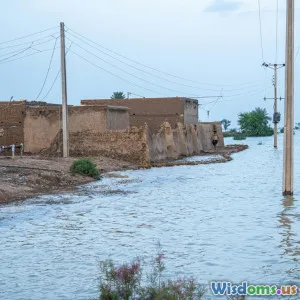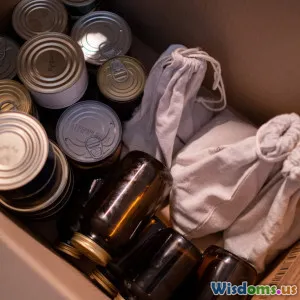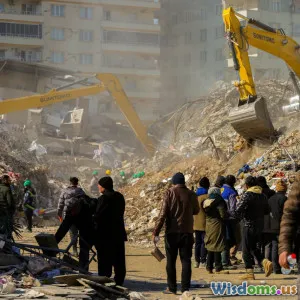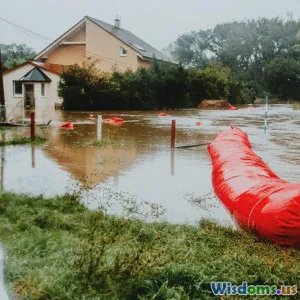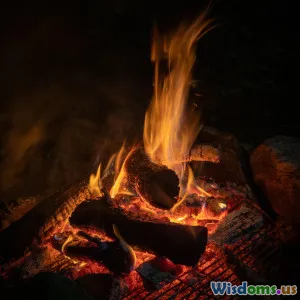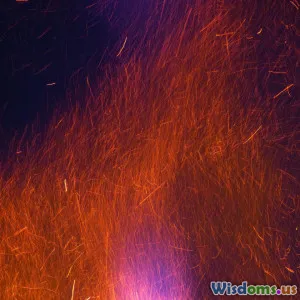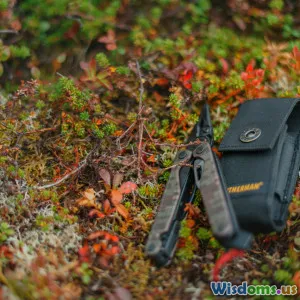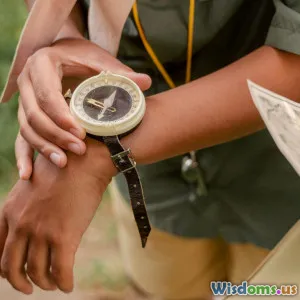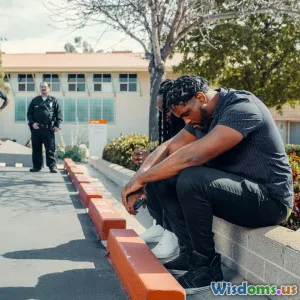
How Ham Radios Keep Communities Connected During Major Disasters
9 min read Explore how ham radios sustain vital communication during major disasters when conventional networks fail. (0 Reviews)
How Ham Radios Keep Communities Connected During Major Disasters
Introduction
Imagine a hurricane tearing through a coastal city. Electricity grids crumble, cellular towers fall silent, and suddenly, your phone is just a paperweight. In such critical moments, how do emergency responders coordinate rescue operations? How do families check on each other's safety? The answer often lies in a decades-old technology that endures amidst modern digital collapse: ham radios.
Ham radios, or amateur radios, serve as an extraordinary backstop for communication during the chaos of major disasters. From isolated neighborhoods to vast metropolitan areas, these devices keep communities connected, facilitate emergency coordination, and sometimes even save lives. This article delves into how ham radios achieve this vital role, exploring the technology behind them, their community impact, and notable case studies that highlight their unparalleled value.
Understanding Ham Radios: An Overview
What Are Ham Radios?
Ham radios are amateur radio systems operated by licensed individuals using allocated radio frequency bands. Unlike commercial or emergency services, ham radio users—often hobbyists and volunteers—communicate peer-to-peer using voice, Morse code, or digital transmissions.
Ham radios operate on frequencies ranging from high frequency (HF), very high frequency (VHF), to ultra high frequency (UHF), allowing communication across distances from a few miles up to across continents, depending on atmospheric conditions and equipment.
Why Ham Radios During Disasters?
During major disasters, traditional communication networks such as cellular, landline phones, and internet infrastructure are highly vulnerable. Their centralized nature, dependence on electricity, and physical infrastructure make them susceptible to failure. In contrast, ham radios:
- Operate independently of existing network infrastructure.
- Can run on alternative power sources such as batteries or solar power.
- Utilize multiple frequency bands that can propagate over varied distances and through challenging environments.
- Have flexible transmission modes (voice, text, Morse code) suited to various scenarios.
This independence makes ham radios resilient and adaptable emergency communication tools.
The Technical Strengths Behind Ham Radio Resilience
Diverse Frequency Bands Enable Adaptable Communication
Ham radio operators use an array of frequency bands, each suited for specific communication ranges and environmental factors:
- HF Bands (3-30 MHz): Capable of long-range communication globally via ionospheric reflection—vital for connecting distant emergency teams.
- VHF Bands (30-300 MHz) and UHF Bands (300 MHz-3 GHz): Primarily for line-of-sight and local communications, perfect for coordination within cities or shelters.
Having multiple bands increases the chance of successful connections even when environmental factors or interference limit one band.
Mesh Networks and Repeaters Enhance Reach
Repeaters—stations that receive and rebroadcast signals—extend communication range beyond the normal line-of-sight limitations. In disasters, establishing or utilizing existing repeater networks enables robust communication across broad geographic areas.
Additionally, some ham radio communities develop mesh networks, where multiple radios interconnect directly and indirectly, providing an automatic self-healing network that can route messages around failures.
Alternative Power Solutions
Recognizing that power outages are commonplace in disasters, ham operators often prepare battery backups, solar panels, and portable generators to keep radios operational for extended periods, ensuring unbroken communication lines during critical windows.
Real-World Impacts and Case Studies
Hurricane Katrina, 2005
During Hurricane Katrina, widespread destruction cut off traditional communications. Amateur radio operators formed one of the most reliable communication backbones, linking victims, emergency services, and relief agencies.
According to the American Radio Relay League (ARRL), more than 1,000 ham operators volunteered, handling evacuation traffic, damage reports, and medical emergency coordination despite massive infrastructure loss.
The 2011 Tōhoku Earthquake and Tsunami
Japan’s extensive network of ham radio volunteers swiftly activated in the wake of the disaster. Amateur operators relayed critical messages from devastated areas where telecommunication infrastructure was wiped out, supporting international rescue efforts.
A notable system called JARL Emergency Communication Headquarters coordinated thousands of operators who sent weather updates, supply requests, and critical health information.
California Wildfires
Recent wildfires in California caused mass outages of cellphone networks. Certified Amateur Radio Emergency Service (ARES) volunteers bridged communication gaps between firefighting units, emergency shelters, and local authorities using VHF and HF radios. These communications facilitated better resource distribution and evacuation orders, reducing risks.
Community and Organizational Roles
Volunteer Networks Support Disaster Preparedness
Groups like the ARRL and local amateur radio clubs run training sessions, emergency drills, and certification programs promoting preparedness. These organizations establish protocols and maintain equipment caches to ensure responsiveness when disasters strike.
Integration with Official Agencies
Many emergency management agencies in the U.S. and globally incorporate amateur radio into their emergency response frameworks. Official partnerships often enable ham operators to serve as auxiliary communicators recognized by government bodies.
For example, the Federal Emergency Management Agency (FEMA) endorses amateur radio’s coordination role through standardized roles under the National Incident Management System (NIMS).
Educating and Inspiring the Next Generation
Ham radio clubs foster enthusiasm for STEM (science, technology, engineering, and math) fields, offering young operators opportunities to engage with real-world technical applications and public service.
Beyond Disasters: The Broader Value of Ham Radio
Ham radios serve not only during emergencies but also in community-building contexts such as:
- Coordinating large public events and parades where mobile coverage may be spotty.
- Enabling communication in remote areas lacking reliable infrastructure.
- Providing a platform for technological experimentation and innovation.
These everyday uses keep skills sharp and radios maintained, reinforcing readiness if disaster strikes.
How You Can Get Involved
Becoming a ham radio operator is accessible and rewarding. Steps include:
- Obtain a license: Most countries require a license demonstrating knowledge of radio operations and regulations.
- Acquire equipment: Starting equipment ranges from handheld transceivers to mobile and base stations.
- Join local clubs: Connectivity with fellow operators offers training, community, and participation in simulated emergency drills.
- Practice emergency protocols: Engage in events like nationwide Field Day exercises to test readiness.
Mastering these skills empowers you to provide crucial aid and underscores the resilience of your community.
Conclusion
When calamity strikes, the infrastructure many take for granted can collapse, leaving people isolated and vulnerable. Yet, across decades and continents, ham radio operators have repeatedly proven to be invaluable messengers of hope, coordination, and survival.
Their ability to communicate without reliance on vulnerable centralized networks, to adapt swiftly to changing conditions, and to mobilize grassroots networks makes ham radios an irreplaceable tool in disaster resilience. They safeguard the human connection that underpins effective response and recovery.
As technology expands, ham radio remains a testament to the enduring power of simple, self-sufficient technologies in safeguarding lives and communities. Whether a seasoned operator or an inspired newcomer, embracing ham radio is embracing a legacy of preparedness and service that can make a critical difference when it matters most.
Rate the Post
User Reviews
Popular Posts










